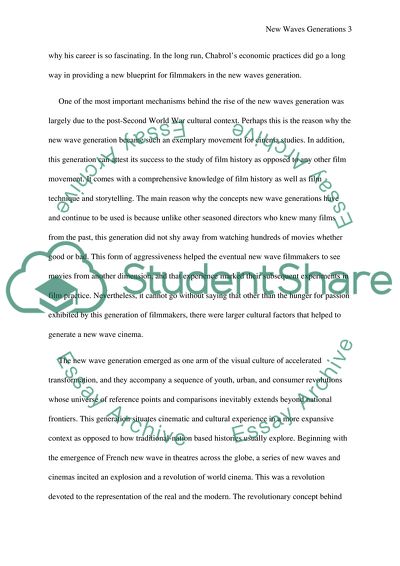Cite this document
(Concepts of new waves Essay Example | Topics and Well Written Essays - 2250 words, n.d.)
Concepts of new waves Essay Example | Topics and Well Written Essays - 2250 words. https://studentshare.org/visual-arts-film-studies/1868468-how-and-why-have-the-concepts-of-new-waves-or-new-generations-been-used-in-writing-the-histories-of-european-or-world-cinema
Concepts of new waves Essay Example | Topics and Well Written Essays - 2250 words. https://studentshare.org/visual-arts-film-studies/1868468-how-and-why-have-the-concepts-of-new-waves-or-new-generations-been-used-in-writing-the-histories-of-european-or-world-cinema
(Concepts of New Waves Essay Example | Topics and Well Written Essays - 2250 Words)
Concepts of New Waves Essay Example | Topics and Well Written Essays - 2250 Words. https://studentshare.org/visual-arts-film-studies/1868468-how-and-why-have-the-concepts-of-new-waves-or-new-generations-been-used-in-writing-the-histories-of-european-or-world-cinema.
Concepts of New Waves Essay Example | Topics and Well Written Essays - 2250 Words. https://studentshare.org/visual-arts-film-studies/1868468-how-and-why-have-the-concepts-of-new-waves-or-new-generations-been-used-in-writing-the-histories-of-european-or-world-cinema.
“Concepts of New Waves Essay Example | Topics and Well Written Essays - 2250 Words”. https://studentshare.org/visual-arts-film-studies/1868468-how-and-why-have-the-concepts-of-new-waves-or-new-generations-been-used-in-writing-the-histories-of-european-or-world-cinema.


